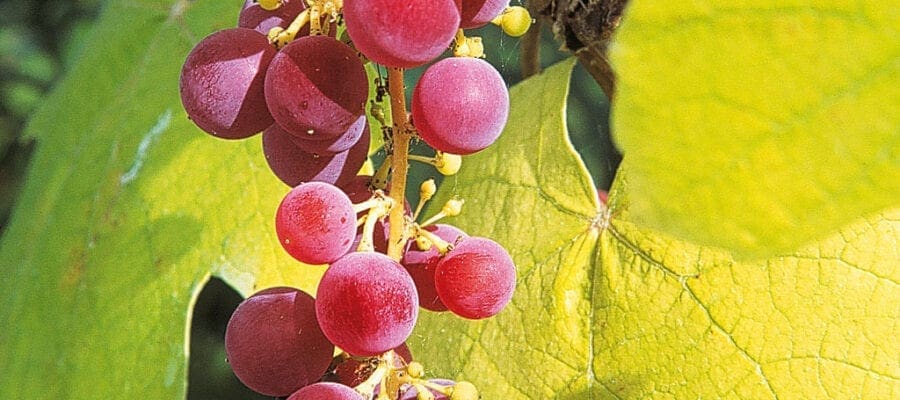Grape vines have been grown in the UK for centuries having, like so many things, been introduced by the Romans.
In more recent times our climate has only really been suitable to grow reliable crops in greenhouses in many areas of the UK, apart from favoured areas such as the south. But with the global climate warming, it is becoming more of a practical proposition to grow grapes outside in more and more areas of Britain.
It is still, however, important, especially when growing dessert grapes, to choose a variety which is best suited to our climate in order for them to ripen fully and produce a sweet crop of berries in most seasons.
If you can’t provide a south-facing, sheltered spot for your vine, then consider growing an indoor variety in a cold greenhouse, conservatory or well ventilated polytunnel.
Grape Varieties
Over the many years and in the many countries that grapes have been cultivated, lots of varieties have been bred. Not only do you have the choice between dessert and wine grapes, but there are indoor and outdoor varieties and also black or white-berried vines.
For outdoor planting consider:
- ‘Boskoop Glory’
A delicious black dessert or wine grape. - ‘Madeleine Angevine’
A heavy cropping white wine grape. - Strawberry grape
A dessert type. - ‘Siegerrebe’
A white dual-purpose variety
For indoor planting consider:
- ‘Black Hamburgh’
One of the best-known dessert varieties. - ‘Thompson’s Seedless’
A vigorous white dessert variety. - ‘Buckland Sweetwater’
A compact, sweet-berried variety.

Grape Growing Tips
The key to good grapes is sun, sun, sun. This is because sunlight is essential if the fruit is to produce the sugar necessary to make the berries sweet. Vines must therefore have a sunny sheltered spot to grow and one of the best and most convenient places to grow them is against a warm wall supported by strong wires.
The soil should be well drained and reasonably deep and fertile. Dig in plenty of well-rotted garden compost or manure at least a month prior to planting and fork over the base of the hole to improve drainage. Scatter some Growmore or pelleted chicken manure over the planting area.
There are very many ways to prune grapes and getting to grips with pruning is essential if your vine is not to take over the garden, producing a mass of leaves and stems, but very little fruit.
The easiest way to prune grapes is to grow them as a cordon (single straight main stem or rod) or multiple cordon (several straight main stems arising from the same plant).
These main stems arise from horizontal branches running along the bottom most wire and are kept as a permanent framework on which the fruiting sideshoots are formed.
As the sideshoots grow they are trained out either side of the main rods and once a bunch begins to form, the shoot is pinched back (has its tip removed) two leaves beyond the bunch to concentrate the plant’s energy on the fruit.
During the winter, the tip of the rod is cut back by half of the growth made in the previous year and as the rods age they can be replaced with suitably placed rods which form on the horizontal branches.
In the case of a dessert grape, if the bunches have set lots of berries, some may need to be thinned to improve the size and quality of the remainder.
This is done in several stages and begins when the fruit is the size of a pea. Eventually there should be 13mm (1⁄2in) between the berries.
Although grapes like to grow in well-drained soil, watering during the summer is important to maintain even moisture levels and to help prevent the fruit from splitting and also to deter mildew.
This is the reason why traditionally, the roots of greenhouse grapes were planted outside the greenhouse, the stem running underneath the wall and into the structure. To test whether grapes are ripe it is best to taste them. Once they are soft and sweet, harvesting can begin.
The bunch is literally snipped out of the stem by cutting it half an inch or so either side of the main stalk. Handled carefully, your grapes may store for six to eight weeks if kept cool with the cut end in water.
More on grapes
More grow guides
For more growing tips and guides, you should subscribe to Kitchen Garden – you’ll receive free seeds with every single issue too!











